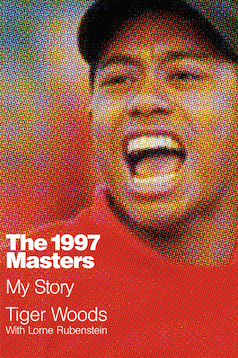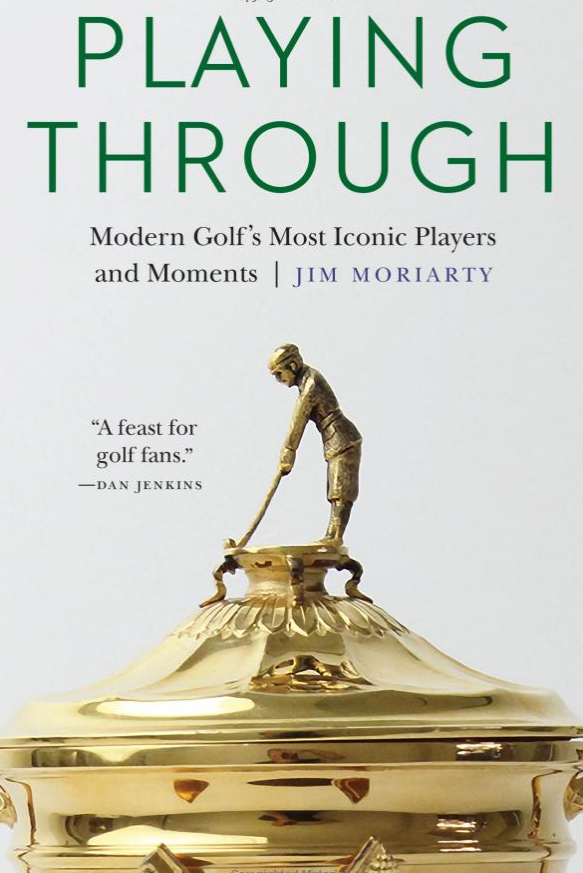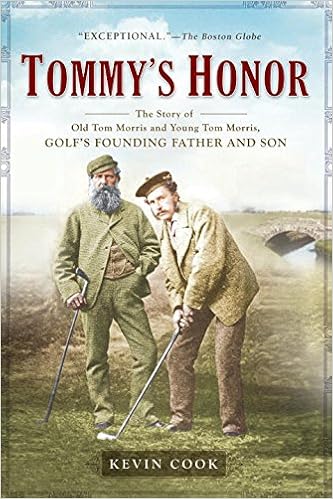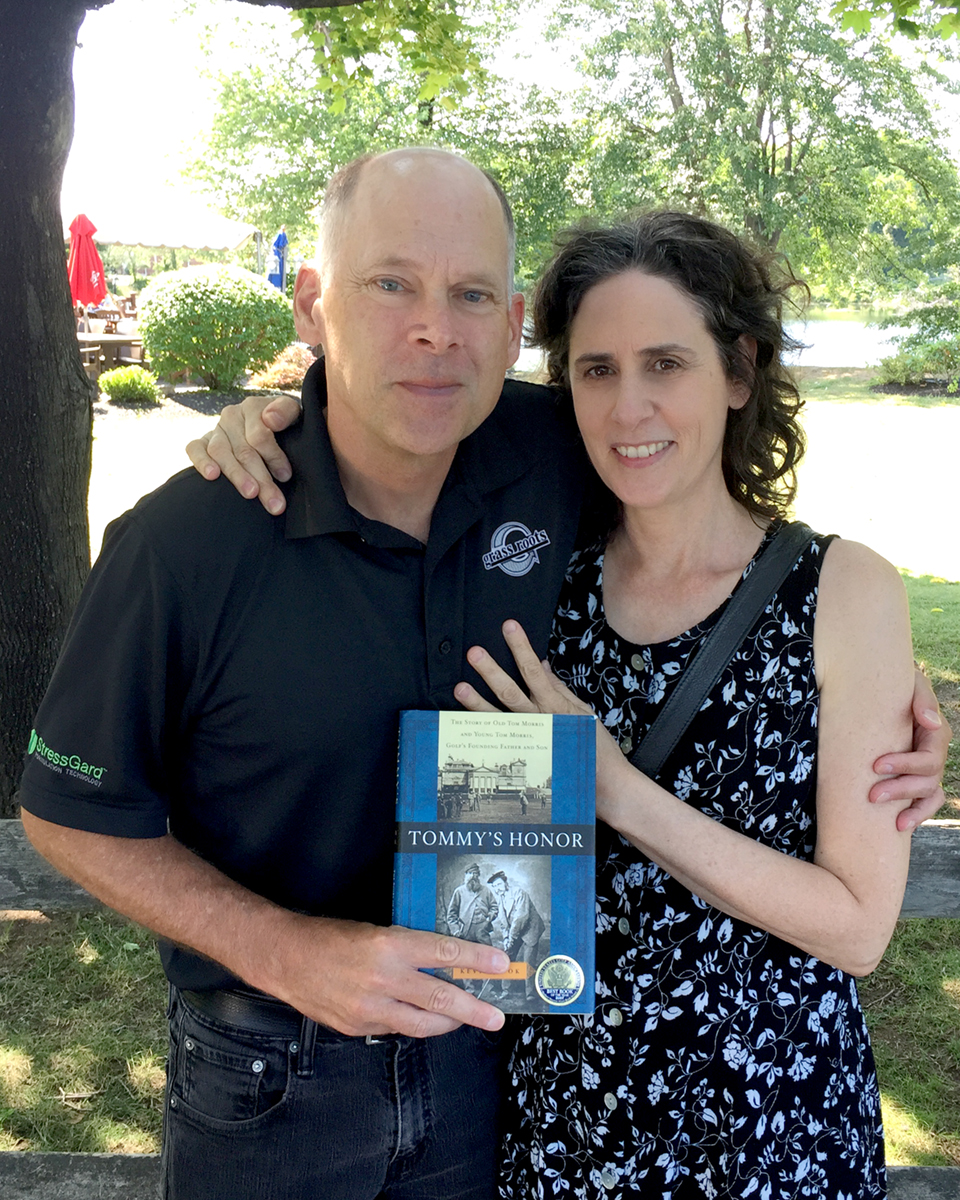Kevin Robbins has authored a biography of Harvey Penick due out April 5 (though Robbins will be signing exclusively Wednesday at the Austin CC pro shop). The former Austin American Statesman writer is still on top of the Austin golf scene and is a professor at the University of Texas School of Journalism.
 I've just begun his wonderful book and for fans of golf or biographies, it's just the kind of celebration of an American life that you could hope for.
I've just begun his wonderful book and for fans of golf or biographies, it's just the kind of celebration of an American life that you could hope for.
As discussed on Morning Drive today, this week should be about Harvey Penick as much as it's about Austin and the country club. So I was thrilled that Robbins could be featured in this week's Forward Press, and that he has written this PGATour.com piece on Penick. Here is his interview in its entirety:
GS: What inspired you to do a biography of Harvey Penick?
KR: My grandmother gave me the Little Red Book for Christmas in 1992. Every chapter felt like an epiphany. I’d never read anything like it. It completely changed the way I looked at golf. I circled words, underlined passages, dogeared pages, filled the margins with stars and check marks and exclamation points. I bought the three other books and loved them just as much.
All these years later, after I’d written many times about Harvey and his family and his pupils as a golf writer for the Austin American-Statesman, I was lying in bed, trying to think of a book idea, because I was a college teacher now, and college teachers are expected to write books. I originally wanted tell the man-in-full story of the 1995 Masters. But Ben Crenshaw was tepid about the idea, and I really needed his participation for it to work. Literally the very next night, lying in bed again, I realized I was missing the point entirely. I didn’t want to write about the 1995 Masters. I wanted to write about the reason we remember the 1995 Masters. That reason was Harvey.
GS: Most people know of Harvey through his book or Ben Crenshaw’s Masters win. What does the book delve into that will most surprise people about his life?
KR: Many things, I hope. Harvey was an excellent player. He competed with or against Walter Hagen, Ben Hogan, Horton Smith, John Bredemus, Babe Didrikson Zaharias, Betsy Rawls and many other titans of the game. He played pre-PGA Tour professional tournaments throughout Texas, including the early Texas Opens at Brackenridge Park. He finished in the middle of the pack at the 1950 Texas PGA, notable because his prized student, a young man in cuffed khakis named Morris Williams Jr., beat Byron Nelson to win. Williams won the three major Texas championships that year — the Texas Junior, the Texas PGA and the Texas Amateur. He remains the only player to have done that.
The book shines a light on players such as Williams, who died three years later, before he turned 24. He might have been the best player Harvey ever taught had he not been killed in a plane crash in Florida. I hope readers will enjoy learning about how young Harvey learned to play — by watching the greats, including first-hand encounters with Francis Ouimet and Bobby Jones — and how he turned those observations into the contents of his red notebook, the forebear of the Little Red. But I hope also readers will enjoy meeting and learning about players such as Williams, Ed White, Terry Jastrow, Cindy Figg-Currier and many others who never made the World Golf Hall of Fame but have compelling stories nonetheless.
I also love the story behind the Little Red Book. On one level, it’s a story of the relationship between two unlikely collaborators: Harvey and his co-author, the larger-than-life Bud Shrake. On another, it’s a story of purpose. Harvey was not well in 1991, when he and Shrake began work on the Little Red Book. The project gave Harvey another reason to live. It gave him new meaning. This is a biography, but it’s also a story of the importance of identity.
GS: You are teaching journalism at UT. What’s your sense of the state of golf journalism today?
KR: I miss Herbert Warren Wind. I mean that both literally and figuratively.
I very much admire Alan Shipnuck and Michael Bamberger and Karen Crouse and others who tell wonderful stories about and through golf, but I’m sentimental for the time when Golfweek and Golf World arrived in the mailbox with evocative, well-crafted game stories and profiles that I could really settle into, for when The New Yorker gave Wind 6,000 words to go deep and long and broad. Golf seems so well suited to literary journalism. Who was it who said the smaller the ball, the better the writing? He, or she, was right.
I don’t follow golf journalism quite as much as I used to. I still read Doug Ferguson and will until his last tournament. I think Jason Sobel is delightful. I miss Bill Fields.
I like what you, Shane Bacon, Shane Ryan and others have brought to golf coverage. You’re responsible for a shift, I think, to journalism that is less cloying, more critical, less reverential and more accountable, in the tradition of Gary Van Sickle and Jeff Rude. I also think Golf Channel is doing good work, both on the broadcast and the website. There are more places to go for golf coverage and commentary. Everyone seems to make everyone better.
GS: The location where Harvey started as pro at Austin Country Club is not the current location, correct? What’s the backstory on the club’s move?
KR: The club has moved twice. The growing city of Austin eventually surrounded the original location, so the club moved east — to the country, as it were — in 1950. Perry Maxwell designed the course there, and that’s where Harvey made his greatest impression, teaching players such as Rawls, Kathy Whitworth and Mickey Wright, as well as Crenshaw and Tom Kite when they were boys. The club moved in 1984 to its current location in Davenport Ranch, in the beautiful and prosperous hills of far west Austin. Another club, Onion Creek (the birthplace of the Champions Tour, it should be noted), had begun siphoning members in the 1970s, and ACC wanted to relocate to where the money was moving in Austin. That direction was west.
 Your site host meeting Mr. Penick in 1990.GS: How do you think Austin CC will work as a tournament venue?
Your site host meeting Mr. Penick in 1990.GS: How do you think Austin CC will work as a tournament venue?
KR: Great question. I've played ACC a number of times, but not until the 2012 Texas Mid-Amateur qualifier did I truly learn how to score on it. It isn’t a bomber’s golf course. You have to hit spots with tee shots — sometimes in order to avoid losing a ball in Lake Austin or in a canyon on what will play in the Dell as the front nine. It’s Texas, so you play in wind. It’s a spectacular second-shot course.
I think it favors players who excel with wedges. It’s a short course, so even with fairway metals and long irons from the tee, these players will have many approaches of 120 yards or less. Three of the par-five holes, and maybe four (I don’t know which tee they’ll play on No. 16), are reachable, so little scrambling chips and pitches will be crucial.
It will be cozy. The club isn’t easy to get to, or to walk. It’s bound in many places by the lake, the canyons or, to a lesser extent, neighborhoods houses mansions. It’s not roomy like, say, an Oakmont or Augusta National. Think Colonial, only up-and-down like Augusta — with less space for spectators.
GS: What’s your sense on the outcome of the Lyons muni situation?
KR: The lease between the city and the University of Texas Board of Regents expires in 2019. A wonderful group called Save Muny has made a lot of noble progress in advancing Lions’ rightful role in desegregation, but I don’t think that will have any consequence on system’s goal to extract more money out of that incredibly valuable land. I’m already preparing my farewell letter to sweet Lions.
GS: Favorite TexMex spot in Austin?
KR: Trap question. Mine is Matt’s El Rancho, with about 33 other places in a close tie for second.
GS: What’s the community interest level in this event?
KR: High. Folks are beyond excited. They want to see Jason Day and Adam Scott and Rory McIlroy and Jordan Spieth and Phil Mickelson. They also want to see what ACC looks like beyond the lakeside holes they see from the Pennybacker Bridge on Loop 360. You can’t see much of ACC from roads or streets. I know some very good players in Austin who’ve never been inside the gates. So I think part of the enthusiasm has to do with television coverage of the front side of the course (the back-nine holes every other week of the year).
GS: Favorite golf course in Austin?
KR: Another trap question. I have a rotation of four, and I often answer differently, depending on the occasion.
If this were any other week of the year, I might say The Hills Country Club (designed by Jack Nicklaus, a shot-carver’s dogleggy dream, home of the long-lost Champions Tour event in Austin known as the FedEx Kinko’s Classic), the Onion Creek Club (designed by Jimmy Demaret, birthplace of the Champions Tour in 1978, the prettiest little cypress-lined course east of Houston) or Austin Golf Club (designed by Ben Crenshaw and Bill Coore, a quiet delight of walkable purity — it feels like a sanctuary to me -- tucked into the ranch land west of Austin).
But it’s not any other week of the year, so my answer is this: ACC.
You can buy the book from Amazon here.
 Unfortunately as Rick Young notes at ScoreGolf.com, Rubenstein has made clear this is Tiger's book.
Unfortunately as Rick Young notes at ScoreGolf.com, Rubenstein has made clear this is Tiger's book.


















